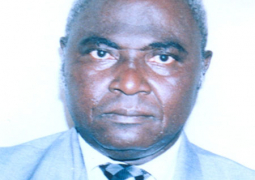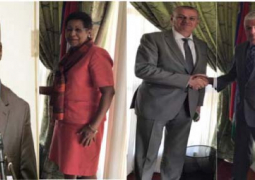Gambia Biodiversity Management and Institutional Strengthening (GBMIS) on 3 August 2012 presented two new double cabin TATA vehicles and beekeeping and woodlock equipment to the managers of
The beekeeping and woodblock equipment include wheelbarrows, rakes, cutlasses, plastic pans and buckets, spades, watering cans and other items for the communities around the protected area, as part of their livelihood support.
The presentation, which took place at the department’s headquarters in Abuko, was witnessed by community members and a cross section of the staff.
Speaking at the ceremony, Ousainou Touray, project coordinator, who also doubles as the senior wildlife conservation officer under the Department of Parks and Wildlife Management (DPWM), said sequel to the preparation and submission of project identification form for GBMIS, as part of the West Africa biodiversity programme under the Global Environment Fund (GEF) Biodiversity focal area’s second strategic objective, to catalyze the sustainability of Protected Area systems, which fulfils the eligibility criteria of strategic programme among others. The Gambia Government signed a Grant Agreement with the World Bank in 2011 to finance the GBMIS project under the implementing agency of the Bank for a period of three years.
According to him, there were series of consultation meetings with the local communities to ensure they identified their constraints and bottlenecks before the commencement of the project to be able to tackle some of the issues affecting the protection and conservation of the protect areas.
Touray said the project is a pilot one that has a lifespan of 36 months and would enable the DPWM, working in partnership with local communities and other key stakeholders, to expand its efforts at improving the management’s effectiveness in two protected areas: Tanji Bird Reserve and the
This, he said, is done to strengthen monitoring of biodiversity and ecosystem health, prepare and implement action plan for at least one additional set of endangered species as well as promote adoption of biodiversity friendly alternative livelihoods in and around Tanji and Kiang West parks.
The project will provide support on updating/preparing and implementing participatory protected area management plans, monitoring management effectiveness as well as conducting ecological surveys to establish a baseline for monitoring the impact of management activities on biodiversity and ecosystems, including completing a mangrove survey.
It will also reinforce the biodiversity monitoring system, prepare/implement two action plans for species of global/regional concern (Hippo and Sitatunga); rehabilitation/construction and equipment of park offices and information centres in Kiang West and Tanji.
For his part, Alpha Omar Jallow, director of the DPWM, stressed the need to maintain the vehicles and the equipment in good condition to be used for its purpose.
For the local communities, he said: “We are working together to protect and conserve the national parks, it is our mandate to provide support to improve the livelihood of the local communities within and around the protected area.”
Lamin Ceesay, manager of Kiang West National Parks, commended the DPWM through the GBMIS and GEF for funding the project, saying they would live up to expectations.



